Little wild goose pagoda
Little wild goose pagoda
Xiaoyan Pagoda is located in the Jianfu Temple of Anrenfang, Chang'an City, Tang Dynasty (now the southern suburb of Xi'an City, Shaanxi Province), also known as the "Jianfu Temple Pagoda". It was built in the reign of Jinglong in Tang Dynasty. It is an important symbol of Chang'an City of Tang Dynasty. The small goose pagoda is a typical work of the early square eaves brick Pagoda in China. It has 15 stories, 13 stories, 43.4 meters high and beautiful pagoda shape. It is the artistic heritage of Buddhist architecture in Tang Dynasty. Buddhism was introduced into the Central Plains and integrated into the Han culture.
The ancient bells in Xiaoyan Pagoda and Jianfu Temple Bell Tower are called "Yanta Morning Bell", which is one of the eight scenic spots in Guanzhong. It is a part of Xi'an Museum and a national AAAA-level tourist attraction.
On March 4, 1961, the Little Wild Goose Pagoda was announced by the State Council as the first batch of national key cultural relics protection units . On June 22, 2014, at the 38th session of UNESCO World Heritage Committee held in Doha, Qatar, the Little Wild Goose Pagoda was successfully included in the World Heritage List as a site of the Silk Road: Road Network of Chang'an-Tianshan Corridor, which was jointly applied for by China, Kazakhstan and Kyrgyzstan.
Historical evolution
Orion of the Name
The Small Goose Pagoda and the big goose pagoda face east and west, which are two important landmarks preserved by the security of the Tang Dynasty's capital master. Xiaoyan Pagoda was always called "Jianfu Temple Pagoda" in Tang and Song Dynasties. The name of "Xiaoyan Pagoda" was related to "Big Wild Goose Pagoda".
Tang Gaozong Yonghui three years (652), the court funded the construction of a Buddhist pagoda, named Yan Pagoda, which was used to resettle Xuanzang's Buddhist scriptures brought back from India, at the West Temple of Cien Temple in Chang'an. In the first year of Jinglong in the middle of Tang Dynasty (707), a small Buddhist pagoda was built under the auspices of the famous Taoshore lawyer, who was funded by palaces in the palace. Later, in order to distinguish the two pagodas, the Cien Temple Pagoda was named "Big Wild Goose Pagoda", while the Jianfu Temple Pagoda was smaller than the Big Wild Goose Pagoda in shape, so the name "Little Wild Goose Pagoda" has been circulating until now.
Architectural history
The Little Wild Goose Pagoda was built during the reign of Jinglong (707-710) in the middle Tang Dynasty to store Buddhist scriptures and Buddhist paintings brought back from Tianzhu by Yijing, a prominent monk in the Tang Dynasty. The pagoda of Xiaoyan Pagoda is a part of the Jianfu Temple, but the pagoda is not in the Jianfu Temple at that time, but opposite to the temple gate. The pagoda is located in Anrenfang, across the street from the gate of Jianfu Temple in Kaihua Fang. During the war in the late Tang Dynasty, the Jianfu Temple was destroyed and destroyed repeatedly. Only the Little Wild Goose Pagoda was preserved.
Documents from the reign of Song Zhe Zong and Yuan You (1086-1094) recorded that the Jianfu Temple had moved from Kaihua Square to the pagoda courtyard of Anren Square at that time, and became a whole with Xiaoyan Pagoda. In 1116, a believer who claimed to be a "tortuous valley" vowed to repair the Little Wild Goose Pagoda, repairing the severely weathered eaves and corners of the pagoda, and decorating it with white clay. Up to now, the pagoda has been painted with white clay.
During the Ming and Qing dynasties, the Jianfu Temple and Xiaoyan Pagoda were repaired many times. There were five large-scale renovations in the Ming Dynasty, basically preserving the previous pattern. In the first year of Xuande in Xuanzong of Ming Dynasty (1426), the monk of Hongjue Temple in Xining, Shaanxi Province, Diu Sijimengqin Xiduhu, went to the Jianfu Temple to sit down. When he saw that the temple was abandoned, he vowed to rebuild it. After the completion of the Ming Ying orthodox fourteen-year (1449) overhaul, he begged the court for the name of the temple. The plaque of "Rongzhi Jianfu Temple" is the imperial pen of Ming Yingzong. At the end of the Chenghua reign of the Ming Xianzong (1487), an earthquake occurred in Xi'an and the body of the Xiaoyan Pagoda was shattered. Later, when the tower was rebuilt, a layer of bricks was laid at the bottom of the tower, but no cracks in the tower body were repaired (cracks in earthquake cracks were repaired only after a renovation in 1965). The Xiaoyan Pagoda had 15 stories. In the 34th year of Jiajing reign of Emperor Zong of Ming Dynasty (1556), the top two stories of the pagoda were destroyed by the earthquake in Huaxian County. There are 13 stories left.
In the Qing Dynasty, Jianfu Temple was renovated many times, with the largest renovation scale in the 31st year of Kangxi (1692). In the late Qing Dynasty, the Tibetan Sutra Building and Nanshanmen were also built.
After the 1911 Revolution, from 1926 to May 1949, the Jianfu Temple was occupied by the army for a long time. The Little Wild Goose Pagoda also served as a military command post. After the Kuomintang troops evacuated from Xi'an, the palace of the Little Wild Goose Pagoda was filled with rubbish.
Protection of cultural relics
After 1958, the cultural relics department took over the Jianfu Temple and began the restoration of the Jianfu Temple and the Xiaoyan Pagoda.
On March 4, 1961, Xiaoyan Pagoda, as an ancient building in Tang Dynasty, was listed in the first batch of national key cultural relics protection units by the State Council.
In 1963, the Little Wild Goose Pagoda Preservation Office was established.
In 1965, the Xi'an Civil Administration Association carried out a comprehensive survey and renovation of the Xiaoyan Pagoda, restored the base of the tower, renovated the North-South coupon holes and cracks in the tower body, strengthened the eaves and angles of the tower, added wooden floors and stairs, and treated the top and drainage of the tower.
In 1980, the Xiaoyan Pagoda Cultural Relics Reserve was officially opened to the outside world.
In 1992, the Shaanxi Provincial People's Government issued the protection scope and construction control zone of the Little Wild Goose Pagoda.
In 2006, Xiaoyan Pagoda was listed in the Preparatory List of World Cultural Heritage Applications by the State Administration of Cultural Relics.
In 2007, the protection organization of Xiaoyan Pagoda was changed to Xi'an Museum. After its completion, the Xi'an Museum officially opened to the outside world, including cultural relics exhibition hall, historic scenic spots and Garden Tourist areas. The Little Wild Goose Pagoda became a part of the museum.
On September 25, 2011, an International Symposium on "Small Goose Pagoda Earthquake Resistance and Protection" was held in Xi'an, jointly organized by Xi'an Museum, Xi'an Urban Heritage Conservation Research Center and International Council for Ancient Sites (ICOMOS) Xi'an Conservation Center. More than 80 experts and leaders of cultural relics institutions from Belgium, Slovenia, Japan and China participated in the conference.
In 2012, the Xi'an Museum completed the archaeological exploration of the protected area of the Xiaoyan Pagoda with a total exploration area of 800 square meters.
On the morning of March 27, 2013, the Xi'an Museum organized and held the "Examination and Approval of the Outline of the Silk Road Exhibition of the Little Wild Goose Pagoda". Participants initially determined the content and structure of the exhibition outline, and designated the title of the exhibition as "Silk Road Pearl Little Wild Goose Pagoda". This exhibition is a special exhibition to cooperate with the joint declaration of world cultural heritage of Xiaoyan Pagoda. This examination and approval will be a comprehensive and in-depth discussion on the exhibition outline of Xiaoyan Pagoda Silk Road Heritage Application after the "Assessment Meeting on the Exhibition Outline of Xiaoyan Pagoda Silk Road" on January 16, 2013.
On April 02, 2013, the State Administration of Cultural Relics approved the "Request for the Project Plan for the Application of the Little Wild Goose Pagoda" (Shaanxi Cultural Relics Word No. 22, 2013), and agreed in principle to the proposed scheme.
On October 13, 2013, the application project of Xiaoyan Pagoda was accepted by experts of the International Council of Monuments and Sites.
In May 2014, the project of Xiaoyan Pagoda was appraised by the Expert Group of the International Council of Monuments and Sites.
On June 22, 2014, at the 38th session of UNESCO World Heritage Committee held in Doha, Qatar, the Little Wild Goose Pagoda was successfully included in the World Heritage List as a site of the Silk Road: Road Network of Chang'an-Tianshan Corridor, which was jointly applied for by China, Kazakhstan and Kyrgyzstan.
On April 18, 2015, the 50th anniversary of the International Council on Monuments and Sites (ICOMOS) was founded. The theme of the International Day of Monuments and Sites on April 18 was "Commemorating the 50th anniversary of the International Council on Monuments and Sites", calling on countries to carry out colorful activities to publicize the concept and contribution of ICOMOS in the protection of International Cultural Heritage sites. As the business center of ICOMOS in Xi'an, IICC-X has actively responded to the call of ICOMOS and carried out a series of activities on cultural heritage protection and propaganda in Dayan Pagoda, Xiaoyan Pagoda and Dahua Yarn Mill around the theme of "commemorating the 50th anniversary of the establishment of ICOMOS".
On April 29, 2015, the State Administration of Cultural Relics approved the "Request for the Establishment of Renovation Projects for the Cishi Pavilion of the Little Goose Pagoda" (Shaanxi Cultural Relics Word No. 18 ), and agreed to the establishment of Renovation Projects for the Cishi Pavilion of the Little Goose Pavilion.
Tourism information
Address:
Xi'an Friendship West Road, Xi'an Museum, Shaanxi Province
Opening Hours:
9:00-16:00 (closed every Tuesday)
Admission ticket:
Free (3,000 individual visitors per day, including the ancient buildings of Jianfu Temple and Xi'an Museum)
Transportation:
18, 203, 204, 218, 21, 224, 29, 32, 407, 40, 410, 46, 508, 521, 700, 707, 713, 720, swim 7, swim 8
Pictures From: http://bbs.fengniao.com/forum/10653807.html
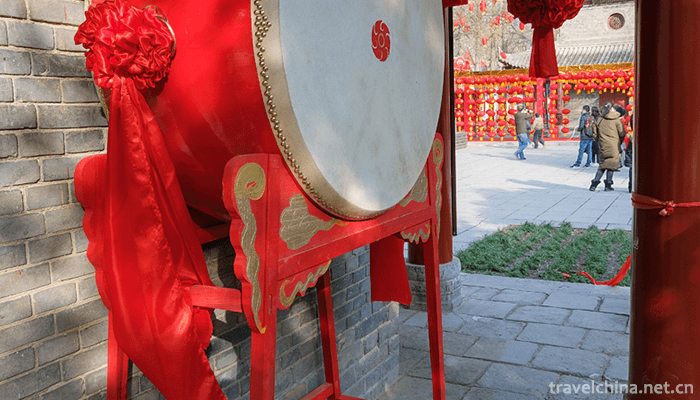

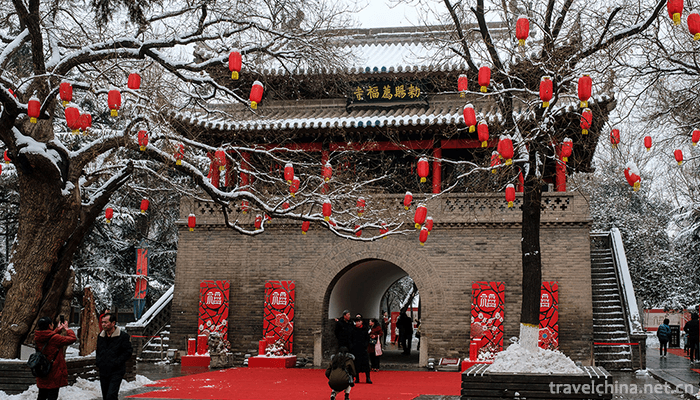
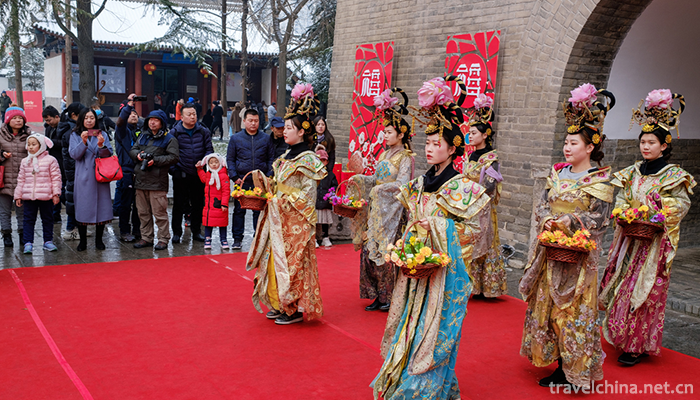
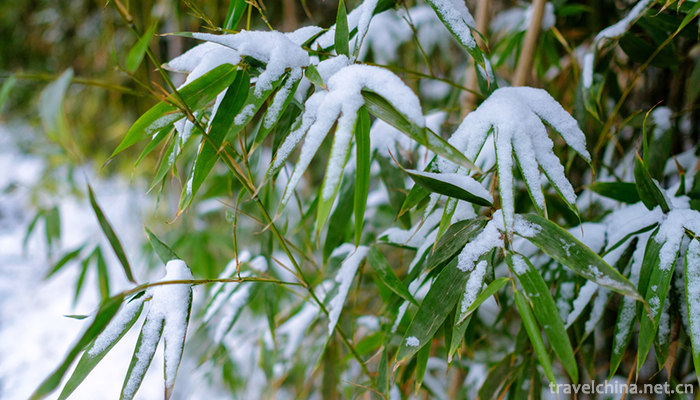
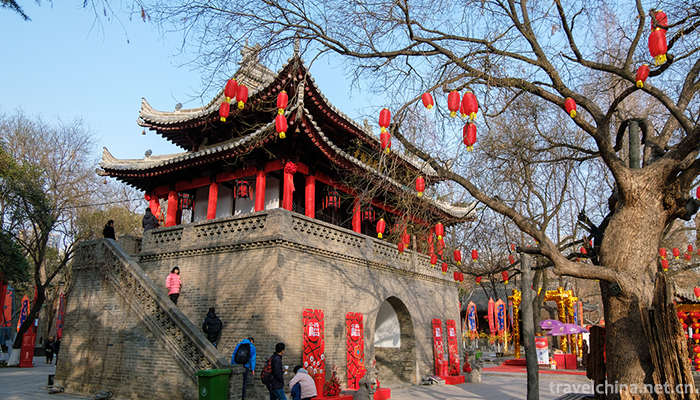
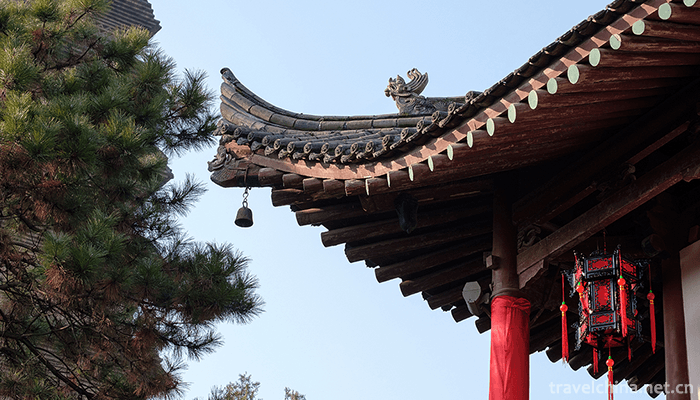

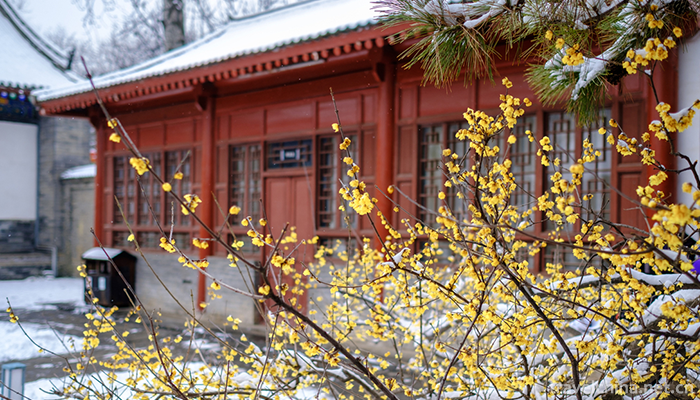
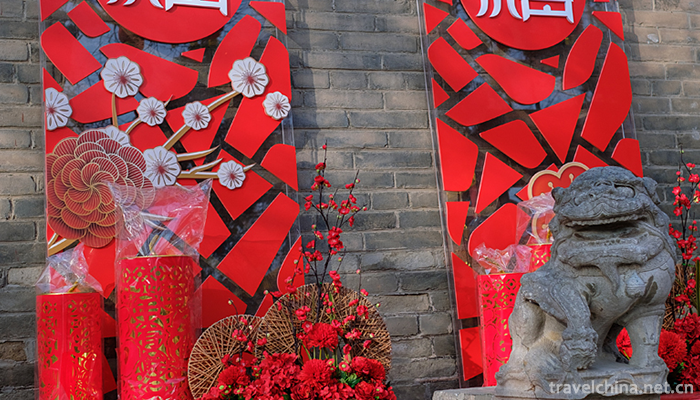
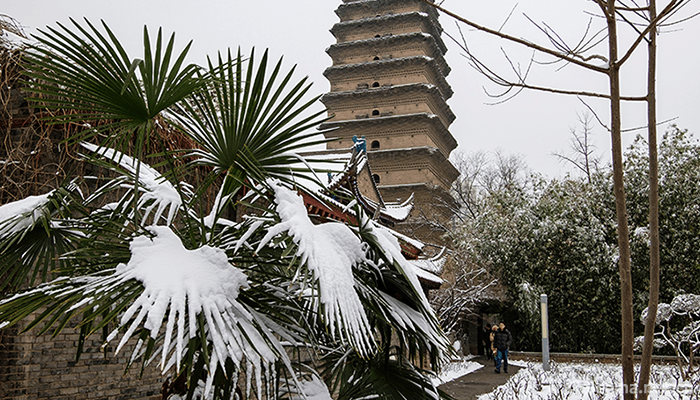
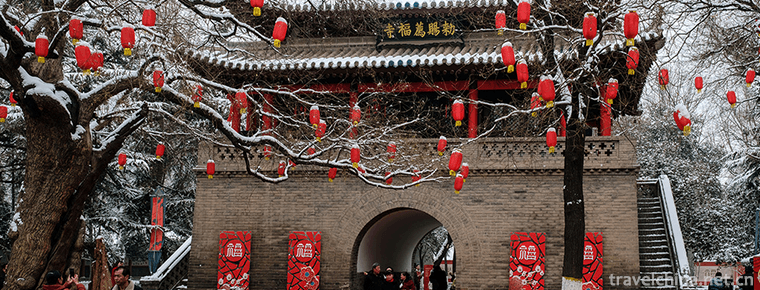
-
1.Bali River Scenic Area
Bali River Scenic Spot is a national AAAAA-level tourist attraction with "Global 500 Top" environmental protection. It is located in Yingshang County
Time 2018-12-08 -
2.Sun Zhongshans hometown
Sun Yat-sen's hometown is located in Cuiheng Village, Zhongshan City, Guangdong Province. It is surrounded by mountains on three sides: south, north and west, East by the Pearl River Estuary
Time 2018-12-12 -
3.Jiuxiang Scenic Spot
Yiliang Jiuxiang Scenic Spot is located in a mountainous area with a cool climate, continuous peaks and valleys with a relative height difference of about 200 meters. The surface elevation is between
Time 2018-12-22 -
4.Fire tiger
Fire tiger is a traditional folk dance form spread in Fengtai, Anhui Province. One of its greatest characteristics is the word "fire". Performers often wear tight, thick clothes and tie tige
Time 2019-05-05 -
5.Lanzhou Taiping Drum
Lanzhou Taiping Drum, a traditional dance in Lanzhou City, Gansu Province, is one of the national intangible cultural heritage.
Time 2019-05-10 -
6.Making Techniques of Lianshi Paper in Lead Mountain
Lead Mountain Lianshi Paper Making Skills, local traditional handicraft in Jiangxi Province, one of the national intangible cultural heritage.
Time 2019-06-10 -
7.String Music Heze String Music
Heze string music is one of the second batch of national intangible cultural heritage announced by the State Council. It is a well-known traditional folk music in southwestern Shandong Province, and i
Time 2019-07-01 -
8.Xinjiang Uygur Mukam Art
Xinjiang Uygur Mukam Art is a large-scale integrated classical music art form which integrates singing, dancing and music. It is the general name of "Twelve Mukam" and "Daolang Mukam&qu
Time 2019-07-06 -
9.Yangge Opera
Yangge Opera is a traditional opera art widely popular in China, mainly distributed in Shanxi, Hebei, Shaanxi, Inner Mongolia, Shandong and other places. It originated from the songs sung by the worki
Time 2019-07-10 -
10.Wannan Medical College
Wannan Medical College is located in Wuhu, a famous historical city known as "the great port of the Yangtze River and the backbone of Anhui". It is close to the vast Yangtze River and gather
Time 2019-11-19 -
11.China Agricultural University
China Agricultural University (China Agricultural University), referred to as "China Agricultural University", is located in Beijing City By Ministry of Education of the People's Republic of
Time 2019-12-21 -
12.Meishan scenic spot
Meishan has a long history and culture and many cultural relics. Meishan County, where the municipal government is located, has a history of 1505 years. It is a famous town of Sansu culture. There are 2 provincial cultural relics protection unit
Time 2020-12-18